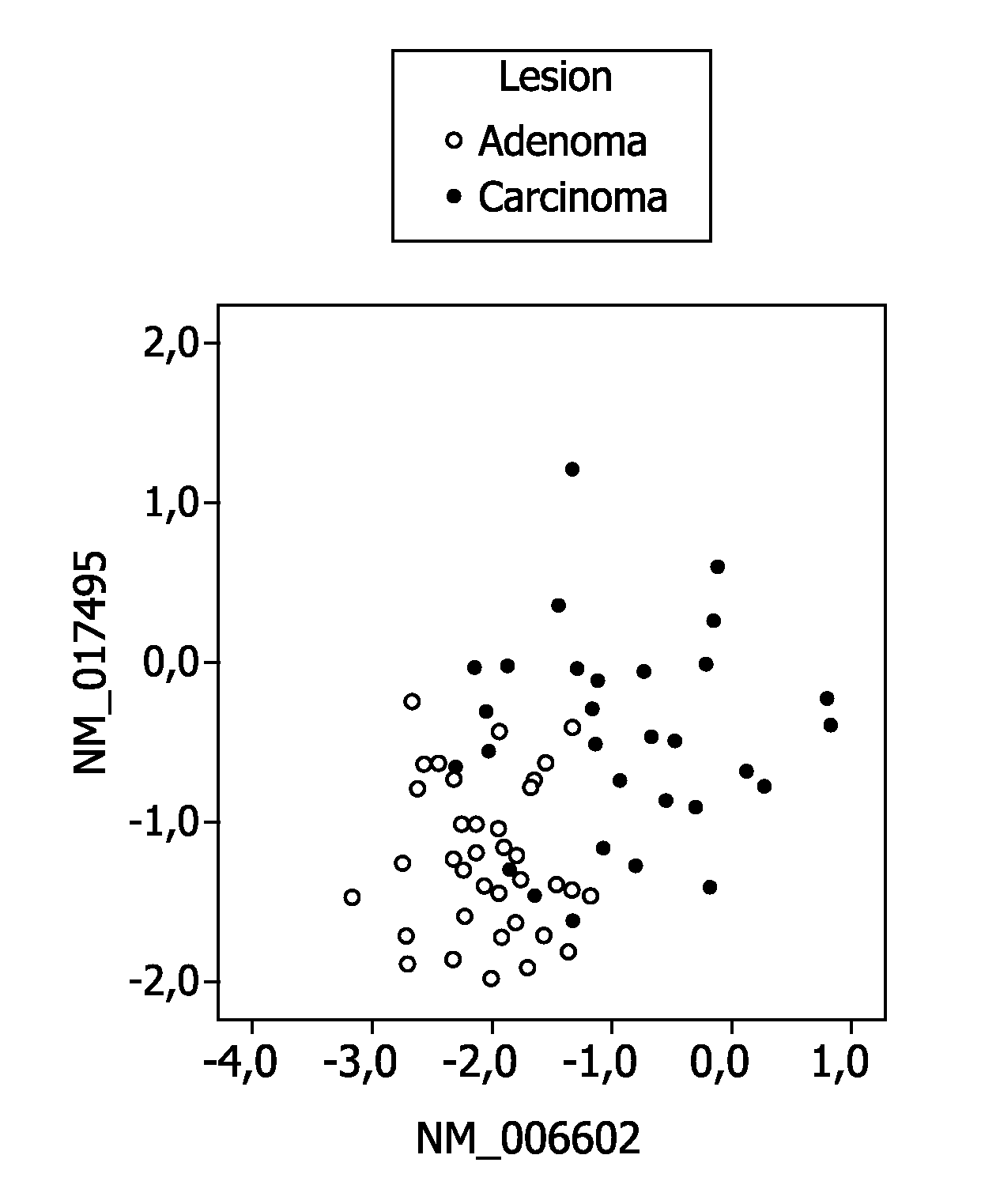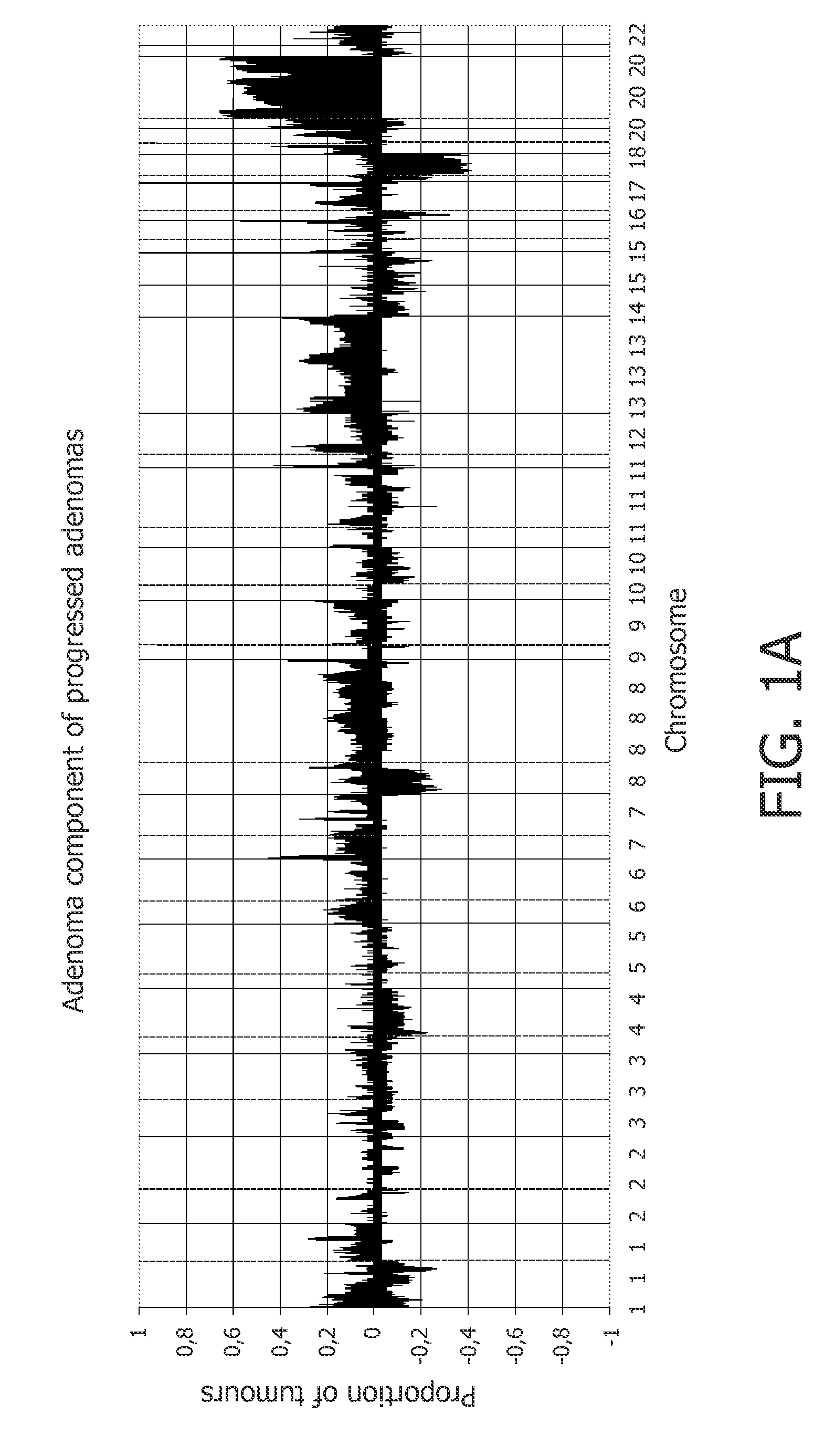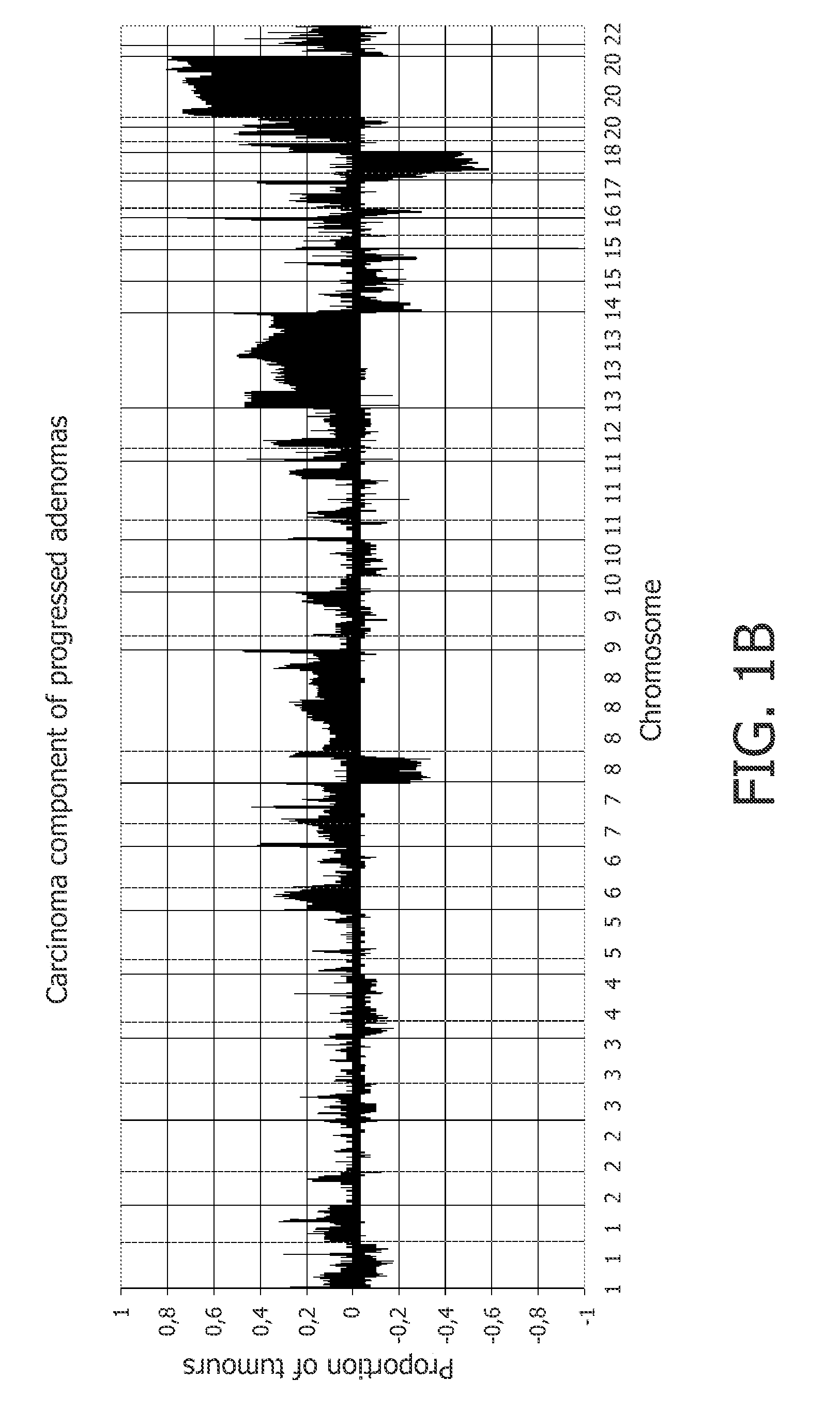Methods and compositions for diagnosing and treating a colorectal adenocarcinoma
a colorectal adenocarcinoma and composition technology, applied in the field of methods and compositions for diagnosing and treating colorectal adenocarcinoma, can solve the problems of poor outcome in gastric and crc, small subset of adenocarcinomas progressing to adenocarcinomas,
- Summary
- Abstract
- Description
- Claims
- Application Information
AI Technical Summary
Benefits of technology
Problems solved by technology
Method used
Image
Examples
example 1
Materials and Methods
Tumor Samples
[0189]Forty-one formalin-fixed and paraffin-embedded progressed colorectal adenomas (with a focus of adenocarcinoma present, also referred as malignant polyps) collected from the tissue archive of the department of pathology at the VU University Medical Center (VUmc), Amsterdam, the Netherlands, and 73 prospectively collected snap-frozen colorectal tumor samples (37 non-progressed adenomas and 36 adenocarcinomas) were investigated. All samples were used in compliance with the institution's ethical regulations.
[0190]The 41 progressed adenomas corresponded to 19 females and 18 males (three patients presented more than one lesion). Mean age was 67 (range 45-86). From these, adenoma and adenocarcinoma components were analyzed separately adding to a total of 82 archival samples (41×2).
[0191]The 73 frozen specimens corresponded to 31 females and 34 males (six patients had multiple tumors). Mean age was 69 (range 47-89). All histological sections were eval...
example 2
Delimiting Gained Regions on 20q
[0210]41 progressed colorectal adenomas, which were previously studied by classical CGH, were analyzed by array CGH. The adenoma and adenocarcinoma components of these samples were tested separately. Gain of 20q occurred in more than 60% of the cases (FIG. 1A, 1B; Supplementary FIG. 1A). The pattern of copy number changes did not differ between adenoma and adenocarcinoma components (as determined by CGHMultiArray), although sometimes showed lower amplitudes in the adenoma component (FIGS. 1A and 1B).
[0211]Next, the DNA copy number status of 37 non-progressed adenomas and 36 adenocarcinomas was analyzed. From these 73 tumors, 67 (34 adenomas and 33 adenocarcinomas) showed high quality genomic profiles with MAD values1D; Supplementary FIG. 1B).
[0212]To determine the most relevant regions within 20q harboring putative oncogenes with a role in colorectal adenoma to adenocarcinoma progression, STAC (Diskin, S. J. et al., supra) was applied to the combined ...
example 3
Identification of Differentially Expressed Genes
[0213]Microarray expression analysis on the 37 non-progressed adenomas and 36 adenocarcinomas of which snap-frozen material was available were performed. High quality expression array data were obtained from 68 cases (37 adenomas and 31 adenocarcinomas, 7% drop-out).
[0214]Supervised data analysis for identifying putative oncogenes on 20q, was done in two different ways; we compared carcinomas to adenomas, and we compared tumors with 20q gain to tumors without 20q gain. The first approach revealed genome-wide 122 up-regulated genes and 219 down-regulated genes (a total of 341 differentially expressed genes), in carcinomas when compared to adenomas (Wilcoxon test p-value<1e-5 (FDR<0.05) and Thas p-value<0.05). Of these 122 up-regulated genes, 14 map at chromosome 20q (Table 1). For the second approach, only tumors (adenomas and adenocarcinomas) that had both array CGH data and expression data available (n=64) were included. As a pre-sele...
PUM
| Property | Measurement | Unit |
|---|---|---|
| Mass | aaaaa | aaaaa |
Abstract
Description
Claims
Application Information
 Login to View More
Login to View More - R&D
- Intellectual Property
- Life Sciences
- Materials
- Tech Scout
- Unparalleled Data Quality
- Higher Quality Content
- 60% Fewer Hallucinations
Browse by: Latest US Patents, China's latest patents, Technical Efficacy Thesaurus, Application Domain, Technology Topic, Popular Technical Reports.
© 2025 PatSnap. All rights reserved.Legal|Privacy policy|Modern Slavery Act Transparency Statement|Sitemap|About US| Contact US: help@patsnap.com



